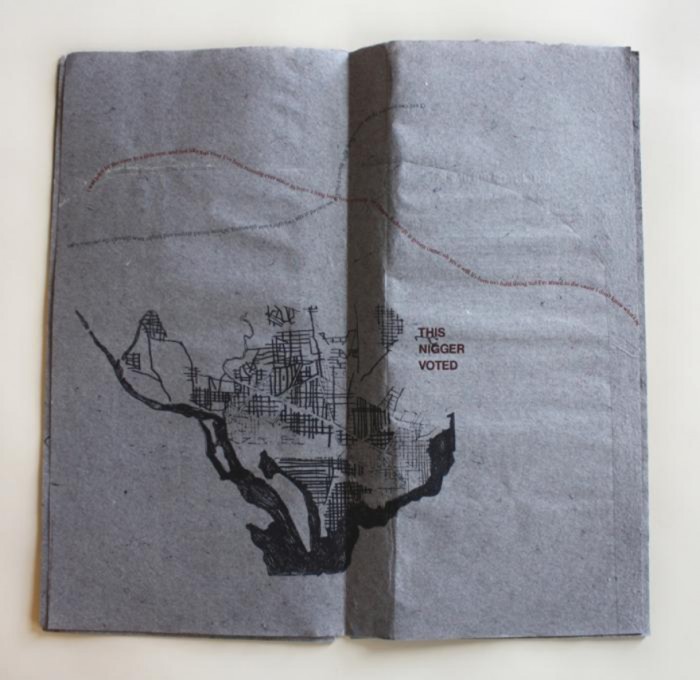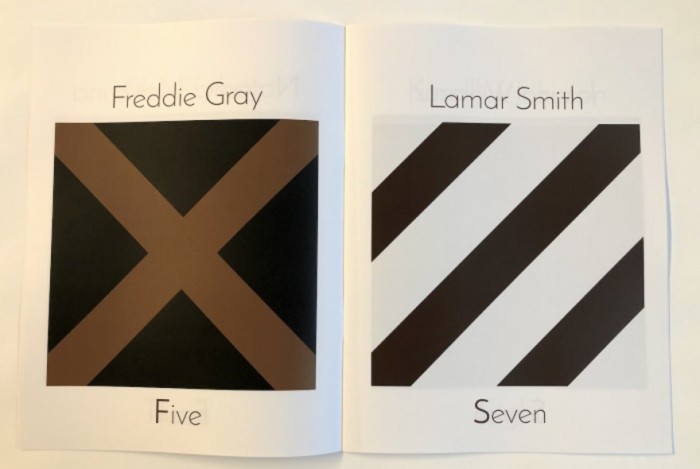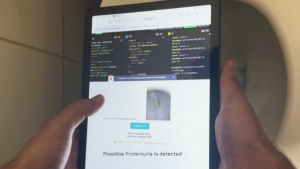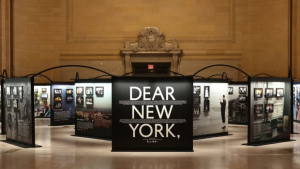Blassingame’s letterpress printing path was set when she came across fallen autumn leaves in Rhode Island, a state that once played a significant role in the Atlantic slave trade.
Seeing these leaves and thinking about the history of her environment encouraged Blassingame, a former Design Indaba speaker, to embark on a project that creates a dialogue about the racism that exists on American soil.
The artist and assistant professor of Book Arts at Scripps College researched and collected various slave ship accounts and receipts from Brown University’s archives of 18th and 19th century. She then printed this information onto the leaves that she gathered.
Blassingame describes herself as being interested in the viewer. Her work creates an experience while it is being consumed. This is due to the textures of the letter printing, the materials that have been screenprinted as well as the look and feel of the book itself.
“My designs combat racism by fostering dialogue and giving people a moment to be part of the conversation through their engagement,” says Blassingame.
Her work tells the story of the African American experience; it journeys from the slave book receipts to accounts of the modern-day police brutality suffered by Trayvon Martin, Eric Garner, and Akai Gurley.
Using different types of bookbinding, letter printing and papermaking, she is able to take the reader on a sensual journey as well.
She notes that whether they just talk about their experience of touching and feeling the print or whether they jump straight into the conversation about racism, her work allows readers to engage with the topic and the art of it at the same time.
Some of these art pieces were exhibited in the show Mourning/Warning, which took place at Santa Barbara’s Atkinson Gallery in October last year. The exhibit was made up of poetry composed by Blassingame as well as photographs printed on handmade paper. The installation also featured a composition of flags created with brown and grey hues. According to Blassingame, these flags are a representation of the relationship that the African diaspora has with maritime trade and travel.
In her book Past Present: DC Unbound, Blassingame places the racial relations found in Washington DC today alongside those of the Jim Crow era. By using the words and rhyme schemes of popular African American songs, the artist presents the idea that racial issues and segregation has not lessened over time, rather all that has changed is the way it is presented.
Part of Blassingame’s work also includes conducting a seminar course at Scripps University College on how artists make use of book forms to explore social justices.
For Blassingame, the role of typesetting in the modern age holds some type of significance. When creating her work, she makes use of lithographic stone, copper plate and wooden or metal typefaces. These techniques hold a physical reality for the artist that allows her to finesse and adjust the voice of the story.
Some of her latest work can be seen in the Playing With Words exhibition at the MCBA Main Gallery in Minneapolis, Minnesota. The work, titled Trace, features a printing by Blassingame and a poem by Dobby Gibson.
Here's an interview with the artist off the back of her Design Indaba Conference 2015 talk:
Read more:
Steph Foster focuses his lens on the American prison system
Myles Loftin explores racial profiling of black men wearing hoodies
Alexis Peskine explores the black experience through unconventional mediums










